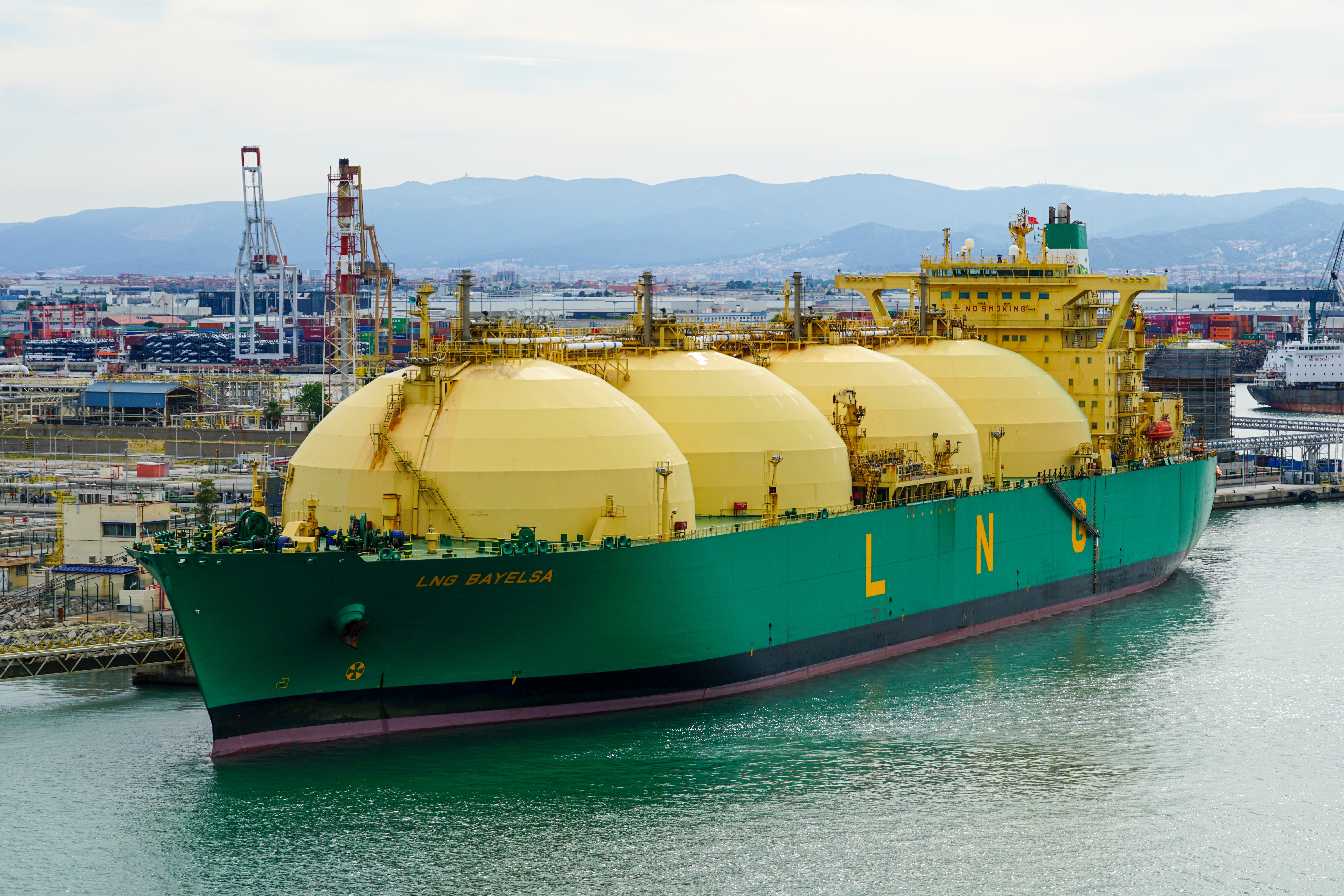European LNG import terminals are used less as demand drops

Key Takeaways:
Europe has likely passed peak LNG consumption. The continent’s demand for the fuel fell 20% year on year in the first half of 2024.
As the average utilisation rate of the European Union’s LNG terminals dropped below 50% in H1 2024, the rush to build excessive import infrastructure might be coming to an end.
Many European countries are still planning new terminals. By 2030, IEEFA forecasts that this could result in three-quarters of the continent’s LNG import capacity being unused.
Russian LNG imports to Europe increased by 11% year on year in H1 2024 and those to France more than doubled.
12 September 2024 (IEEFA) | European Union (EU) LNG import terminals are being utilised less as demand for the fuel continues declining across the continent.
The latest version of IEEFA’s European LNG Tracker suggests there may be a growing realisation that Europe’s LNG import infrastructure will become increasingly underutilised as gas use drops further.
After falling to a 10-year low in 2023, Europe’s gas consumption shrank by 5.4% year on year in the first half (H1) of 2024. EU gas consumption dropped by 3%.
This translates into a reduced need for LNG imports, which declined by 20% in Europe and 11% in the EU in H1 2024. The continent has likely already passed peak LNG consumption. IEEFA forecasts that Europe’s demand for the fuel will drop by a further 37% by 2030.
LNG import terminals have been impacted by this trend. The average utilisation rate of the EU’s terminals fell from 62.8% in H1 2023 to 47.2% in H1 2024.
Following Russia’s full-scale invasion of Ukraine in 2022 and the subsequent cut in Russian pipeline gas supply, European countries have scrambled to build new LNG import terminals. But recent developments suggest this buildout is losing momentum.
“Europe’s LNG terminal construction spree might be coming to an end, with some countries delaying or cancelling infrastructure. Since the beginning of 2023, new terminals or expansions have been shelved in Albania, Cyprus, Ireland, Latvia, Lithuania and Poland. It is unclear whether three planned terminals in Greece will go ahead,” said Ana Maria Jaller-Makarewicz, lead energy analyst, Europe, at IEEFA.
Since the beginning of 2022, Europe has increased its LNG import capacity by 23%, or 58 billion cubic metres (bcm). The countries that have added the most are Germany (16 bcm), the Netherlands (13 bcm), Türkiye (7.7 bcm), Italy (7.5 bcm), France (6.5 bcm) and Finland (5 bcm).
Despite falling demand, many European countries are still planning investments in new LNG import infrastructure. By 2030, IEEFA forecasts that this could result in three-quarters of the continent’s LNG import capacity being unused.
Russian LNG imports continue rising
Europe increased its imports of Russian LNG by 11% year on year in H1 2024. This is despite the EU aiming to end its reliance on Russian fossil fuels by 2027.
Imports of Russian LNG to France rose by 110%, those to Spain were flat and those to Belgium decreased by 16%. These three countries accounted for 87% of Europe’s imports of Russian LNG in H1 2024.
In June, the EU agreed to ban Russian LNG from being transshipped at its ports and sent to third countries. The ban will come into effect from March 2025. Europe increased its transshipments of LNG from Russia’s Yamal terminal by 15% year on year in H1 2024.
Ukraine’s natural gas transit deal with Russia will expire at the end of this year. As Europe’s LNG imports keep decreasing, it is unlikely that the continent’s security of supply will be affected if the agreement is not extended. Europe reduced its LNG imports by 18 bcm between H1 2023 and H1 2024. This decrease is more than the 14.6 bcm of Russian gas exported to Europe via Ukraine in 2023.
Find out more: https://www.ieefa.org/european-lng-tracker/
Press contact
Jules Scully | [email protected] | +447594 920255











